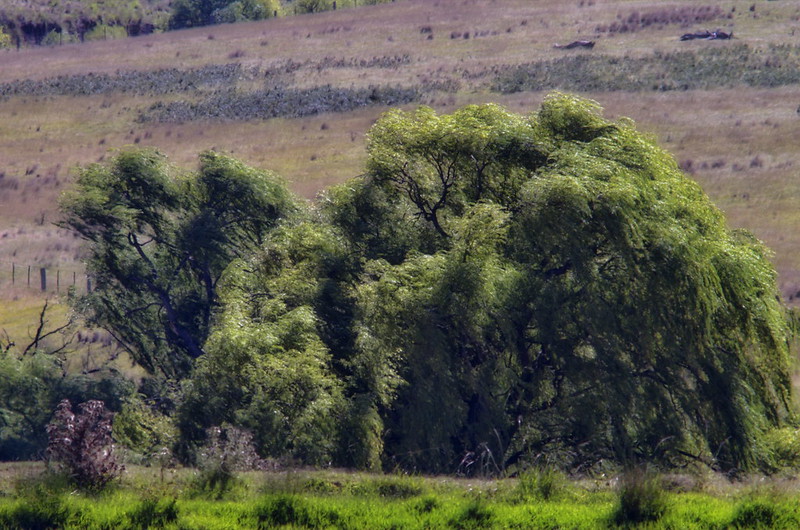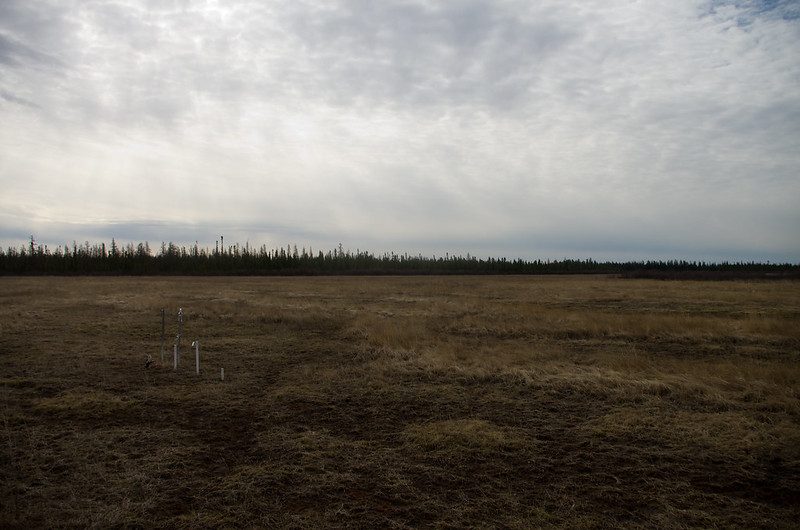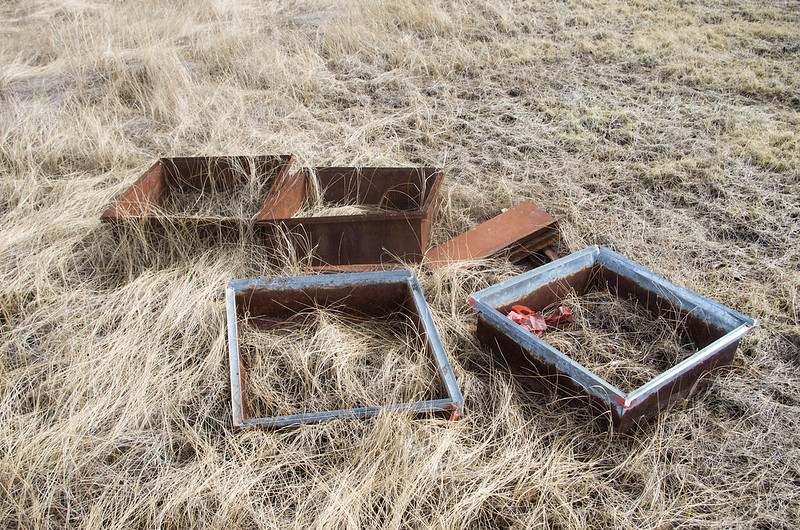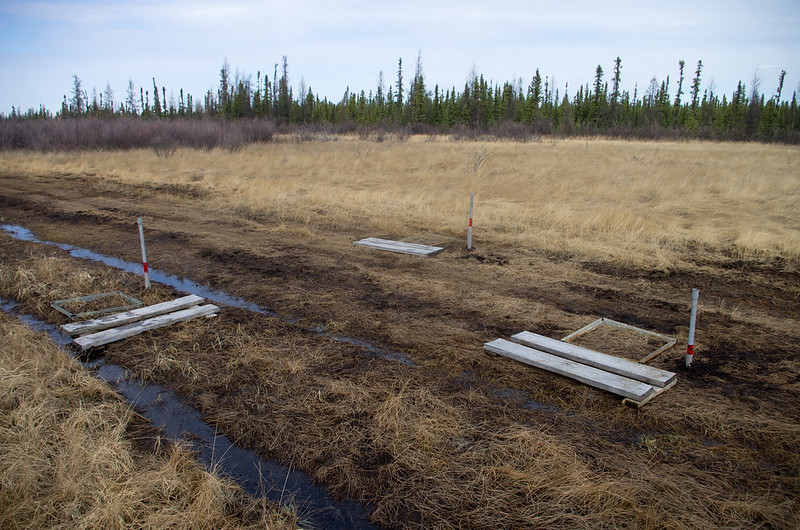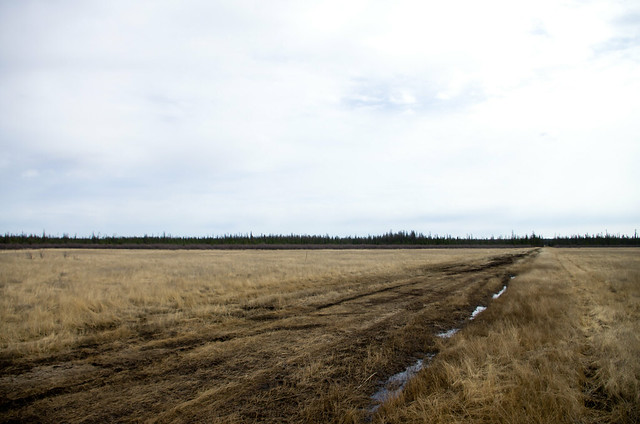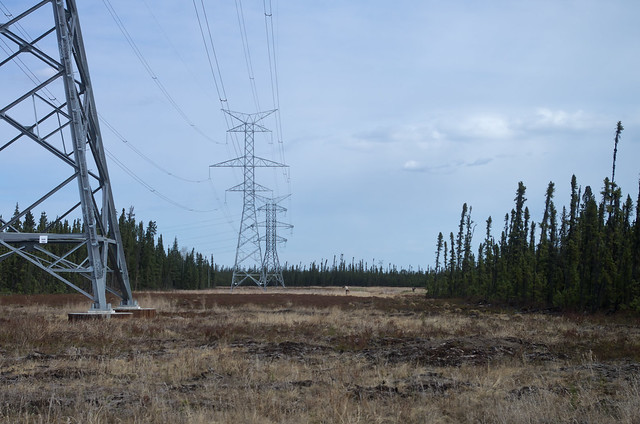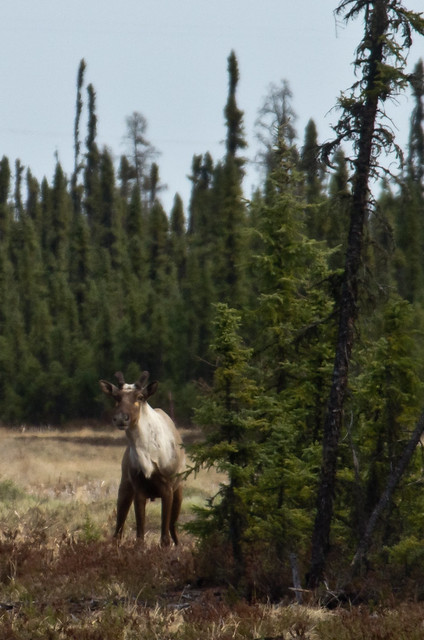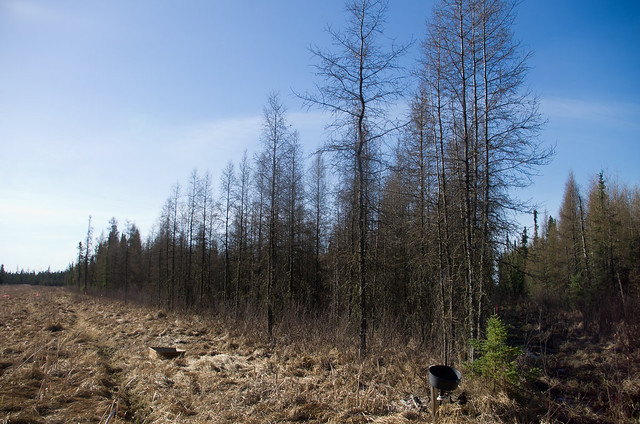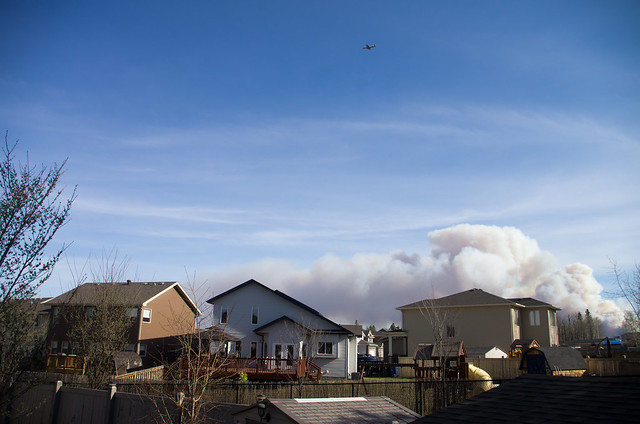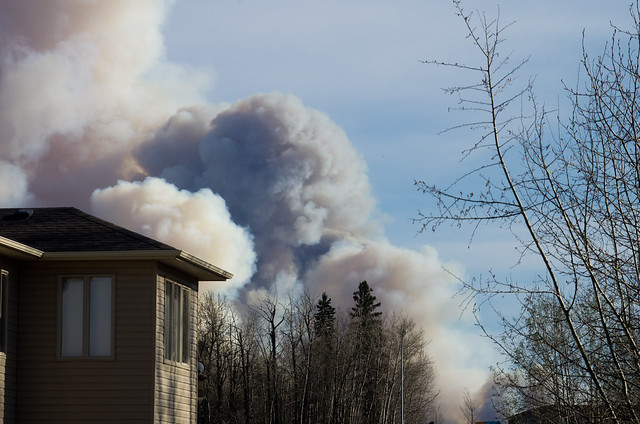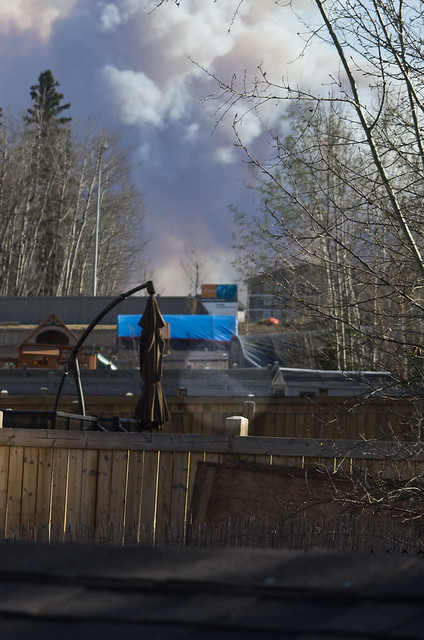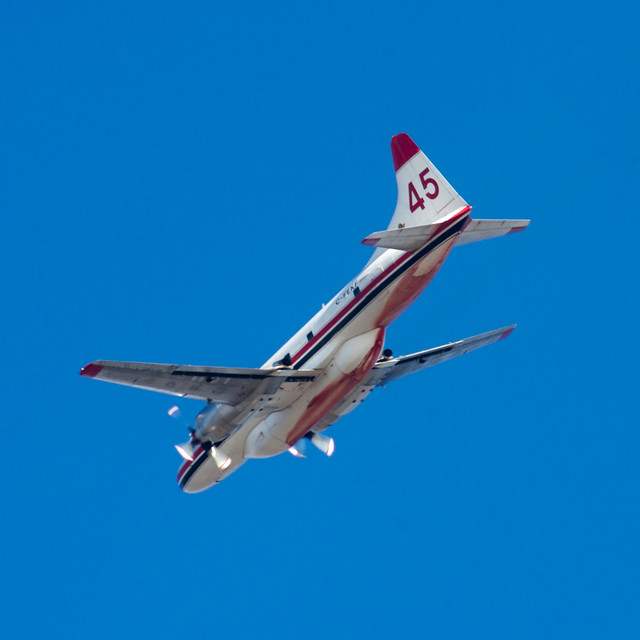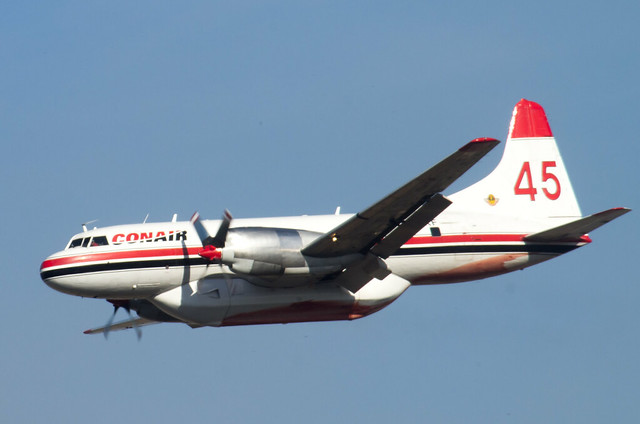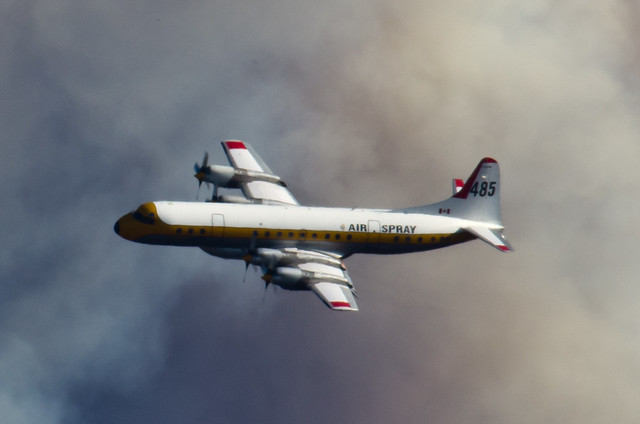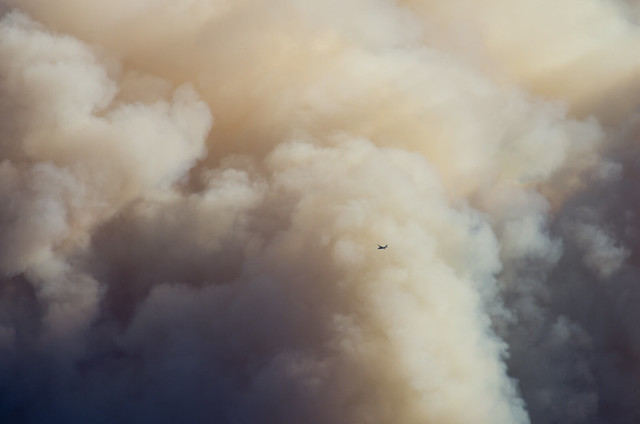This is a list of words, grammar, and writing conventions I put together during my time at Université Laval, based on my work there helping students and others with written English, especially scientific material such as thesis chapters, manuscripts for peer-reviewed journals, and grant applications. Most of these are examples from actual pieces of writing I was working on, with some that I did not see but similar situations arose. Most, perhaps all, are based entirely in my own personal understanding of English writing in Science, and I have tried to indicate the parts where subjective considerations such as personal style or the context of a particular phrase outweigh what I might consider to be correct.
This is a work in progress, though progress is stalled at the moment because I have no non-English-first-language colleagues I am currently helping. Suggestions, corrections, comments, and general discussion are very welcome!
Ameliorate
– in English, this word means “to make less bad”, but in French, “improve” or
“increase”. This makes the sentence “He ameliorated the suffering” mean
completely different things.
Augment
– this word is rare in English, and is almost always paired with some variation
of “to be” in the subjunctive (yes, we have the subjunctive in English! It’s
just not used very much). For example, rather than “the water level augmenting”
(here, “augment” is a synonym for “rise”; it’s not really a full synonym but is
used this way here), “the water level was augmented” (and the rest of the
sentence would be expected to include a description of what caused this
augmentation – e.g. “was augmented by recent rain.”).
Appendix
/ Annex – The additional section of a
document after the References (or Literature Cited) is the Appendix; if there
is more than one they are usually separated by numbers or sometimes letters:
“Appendix 1, Appendix 2” or “Appendix A, Appendix B”. The word “Annex” means
something different in English, though the meaning is usually clear.
Current
/ currently – The English translation of actuel
is “current”, not “actual” (and actuellement
becomes “currently”). When discussing things happening in real time, or when
describing a situation in the present tense, use “current” or “currently”:
“Current legislation includes restrictions on land-uses of this type”;
“Domestic animals are currently not permitted on the site”. When describing how
things are in reality that may be surprising or contradicting previous facts or
statements, use “actual” or “actually”: “While this belief is widespread,
actual conditions do include grazing by livestock”.
Global
– it’s not wrong to use this word to describe conditions across an entire study
area or project, but it is rare to use it that way in English. Most often,
global refers only to the entire planet Earth. Or, you could be talking about
global conditions on Mars, I suppose. “All of a big sphere” is a useful working
definition – if your study or project can be thought of as a large ball, then
“global” works well.
Humidity
– this is a measure (relative or absolute) of the amount of water vapour
dissolved in air or another gas. The similar French word humidité translates to
moisture, damp (or dampness), or wetness. It is possible to measure soil
humidity, the water vapour in the air spaces within the soil, but it is much
more common to measure the amount of liquid water in soil, the soil moisture.
Plantation
(and other words ending in –tion) – in English, words like this that end in
–tion are almost always nouns, while in French they are verbs. In some cases,
the –tion form does not exist in English, such as “planification” (corrected: “planning”),
but in other cases a spell-check function will allow the word because it is a
noun in English. “Plantation” is an example – it’s a noun, and means an area of
land deliberately planted with a crop species (such as cotton or sugarcane, or
commercially valuable trees) and the business associated with it. To describe
the deliberate placement of trees or other plants, use “planting”, and use it
as a verb. The noun is also acceptable, when used as a noun.
“Plantation” has some
associated baggage, in that the word is most often used in historical
descriptions of slave-labour economic activity in the time before the abolition
of slavery in countries or regions such as the United States (abolished 1865)
where the word “plantation” often follows a specific crop, such as “cotton
plantation”. For reasons I don’t know, combinations like “wheat plantation” or
“fruit tree plantation” are extremely rare.
Sensible
/ Sensitive – a ‘false friend’ – the French word sensible translates to the English word “Sensitive”. “Sensible” (in
English) means “full of sense”, usually in reference to a person or idea: “Her
plans are sensible, and her nose is sensitive.”
Realise
/ Realized – often as “thing was realized by method” – this is another
not-wrong-but-not-common word, like “global”. In English, anything can be
realized, but the things most commonly realized are goals, dreams, and similar
abstract concepts, the emphasis is on something that does not exist (a dream of
a better world) becoming real (the world has become better). “Made” is a decent
substitute, and if they fit, “completed”, “conducted”, “performed” are pretty
good, too. If it makes sense to say “made real” then use “realise”.
Realise
is also often used in the sense of a new or previously-ignored piece of
information coming to a person’s attention: “I realized the measurements were
biased by condensation inside the instrument”.
Repeated
/ Repetitive – A measurement or other phenomenon with clear boundaries in space
and time may be repeated. A task or activity may be repetitive, because it is
boring, simple, and must be repeated many times.
Resilience
/ Resistance – Resilience is the capacity to survive or remain intact through
some challenge, though damage may occur. Resistance is the capacity to
completely stop the effects of a challenge, sometimes up to some point, after
which comes (perhaps) catastrophic failure. “The weeds are resistant to the
pesticide, and are resilient to drought.”
Species
– the final S is never removed. One species, two species, some species, no
species. This is also a problem for many native English speakers. “Specie”
is a completely different word, it’s the generic name for coins and other
objects used for currency and is very rarely used. The plural of genus is
genera.
Vulgarise
/ Vulgarisation – in French, this term (vulgariser)
is used to describe the way scientists and other technically-minded people
explain their work to the general public. In English, the verb is very rarely
used, but the adjective, vulgar, is used to describe things that are
distasteful or disgusting, or actions and people that are rude or appealing to
the worst elements of society. For example, a celebrity (actor, politician,
etc.) that sexually harassed a member of their staff and then refused to
apologise for this might be described as a vulgar person, or his behaviour as
vulgar. It’s a synonym for “very rude”, usually with the unspoken implication
of not being ashamed of this behaviour.
There
is no English verb in common usage that describes this activity the way the
French verb vulgariser does, to my
knowledge. In English, we might speak of “creating a plain-language version” or
“rewriting for a general audience”; occasionally people will use the term “lay
person” or “lay public”, a throwback to the difference between communications
within the Church between clergy, and the communications from the Church to the
congregation of regular people, the lay public. Essentially, “lay” is used to
mean “anybody outside of my area of specialisation”.
The words “disseminate”
or “popularise” can work, but have some implications behind them – disseminate
does not suggest any changes to the information (for example, to adapt it to a
different audience), and popularise suggests some positive advocacy, as in
attempting to convince the audience that this is a good idea, and encouraging
the audience to spread it further.
Weigh
/ Weight – the verb is “to weigh” (without a T), the noun is “weight”. Compare
“This weighs 3 grams” vs. “The weight of this is 3 grams”
Les autres problems communs
Contractions
– Don’t. It’s distracting, isn’t it? They’re not used in formal writing. This
includes formal emails and the like, such as when a student writes to a professor
they do not already know well. English doesn’t have the requirement to elide
words together over vowels the way French does.
Contrasts
– It is very common to see expressions such as “In contrast”, “Inversely”,
“Conversely”, “On the other hand”, “However” et cetera in scientific writing because often the author wishes to
draw attention to divergent circumstances or results. Detailed usage notes are
beyond the scope of this document, but some such expressions are best placed at
the start of a sentence (e.g. “In contrast”) while others are best in the
middle of complex sentences (e.g. “conversely”). “Inversely” is rare,
“Conversely” usually works better.
Negatives
and double negatives – most of the time, negatives are easy to use and double
negatives are easy to avoid. Some words can be read as negatives in some contexts,
so it is worth carefully reviewing complex sentences that include negatives in
at least one clause. “Without”, “Instead”, “Beyond” and many others can fall
into this category.
Possessives
– English provides two common ways of indicating possession: the apostrophe-S
or “the possession of subject” form that is similar to many possessives in
French. For example, it is equally correct to describe the peat’s depth or the
depth of the peat. I have been told that, for a Francophone, using the
apostrophe-S “feels more English”. To an Anglophone like me, the apostrophe-S
sometimes appears more informal than the X-of-Y form, but the X-of-Y form can
appear awkward.
Since
/ Because – Because “since” can mean either “because of” or “in the time
elapsed between then and now” it can be unclear when read; context determines
which of these two sometimes quite similar definitions is intended. You may
have been taught not to start a sentence with “Because” (I certainly was) but
that rule is outdated and rather pointless. Because of shifting language use
since the turn of the 20th century, and the potential for confusion
with “since”, I suggest avoiding “since” and using “because”.
This / That / It – It
can be difficult to translate French words such as Ça, Ce, Ces,
Cette, Ceci, and
Cela. Context is the main factor for
determining which to use in a given situation. In scientific writing, “it” and
“its” are less common than “that” and especially “this” – when in doubt, the
pronoun you are looking for is probably “this”. Que and its variations almost always translate to “that” but of
course there are many exceptions.
Were vs. Have been – The
difference between these two forms of past tense is subtle. Things “were”
different; this implies that the time of difference is finished, possibly with
a long interval in between. Things have been different; this implies that some
important event has happened to create the break between then and now.
For
example, when describing the results of another study, use “has been”, as in
“Strong growth has been reported (Smith et al., 2010)” rather than “was”:
“Strong growth was reported (Smith et al., 2010)”. This is a small point, and
probably shows more about my personal opinions than about widespread practice
in science.
Plurals
Many English nouns are not changed when plural, or are considered plural only in unusual circumstances; these are mass nouns (e.g. “water”, with similar rules in French – « les eaux » est rare). Some are most often plural
but have a valid, if rarely used
singular form. Many of these rules are not well known by native English
speakers.
Sometimes, a number greater than one appearing in a sentence does not create a plural. Measurements that describe an object do not indicate more than one object, and can be considered singular descriptors equivalent to non-quantitative properties such as colour or qualitative descriptions of size (“large”, “heavy”, etc.). For example, a bog that covers 50 hectares could be described as “a 50 hectare bog” but not “a 50 hectares bog” because there is still only one bog. If the number and its unit could be replaced by a non-quantitative descriptor (“a large bog”, not “larges”), the unit is singular.
Data
/ Datum – A collection of data are “data”. A single point or measurement is a
“datum”. A bunch of data put together in one place with some organisation is a
“dataset”. The plural is “data”, so you can talk about “my data” or “these
data” but not “this data” or “a data”.
Dice
/ Die – You can roll two or more dice, but if you have only one, you have a
die.
Fish
/ Fishes – One fish. Many individuals of one species of fish are “many fish”.
Several different species are “fishes”.
Research
/ Researches – Most of the time, what several scientists are doing would be
referred to as “research projects” or “conducting different research
activities” or some other way to avoid pluralising “research”. “Researches” is
not wrong, it’s just so rare that it is disruptive when reading.
Information
/ Informations – the only example of multiple informations I can think of would
be a situation in which two or more sources of information were competing or in
conflict. “Information” is a mass noun, like “rice” (“rices” would refer to
multiple strains or species of rice, or to multiple different rice-based
foods).
Moss
/ Mosses – same rule as for fish, though because moss individuals are often
difficult (or meaningless) to distinguish between, the singular is used for
continuous properties: “A carpet of moss; Moss covered 90% of the plot.” But
the plural is also widely used: “We identified three mosses and four lichens;
mosses covered half of the plot”.
Les conventions Scientifiques
Active
voice, as opposed to passive voice, is now widely preferred. The internet is
full of discussion of the relative merits of each, but the consensus seems to
be that active voice is easier to read: “We hypothesize that...” rather than
“It was hypothesized that...”. Active voice is usually easier to write, too,
and passive voice can be saved to emphasize particular concepts or procedures:
“We discovered several problems with this method. It was developed under
different circumstances than the current study, and has several drawbacks as a
result.” The passive voice is still useful, for example, see the first sentence
of this paragraph. Of note, passive voice avoids assigning responsibility or
blame for actions, so you can use it to criticise some thing without explicitly
criticising the person that created or used that thing: “The vehicle was left
unlocked and a number of items were stolen”.
Adverbs
such as “really”, “very”, “extremely”, et
cetera are rare in scientific writing. They contribute little additional
information and are not quantitative unless explicitly defined a priori as indicators of particular
categories. “The water table was very high” conveys no information not present
in “The water table was high”; even better than both of those is “The water
table was 10 cm higher than the expected value”.
Biological
species names are always italicised,
and the genus name is always capitalised while the species name is never
capitalised. Homo sapiens, Sphagnum fallax, etc. It is extremely
rare to start a sentence with just a species name without a genus; when using
species names in Every Word Capitalised titles, do not capitalise the species
name: “This Paper Is About Sphagnum
fuscum”. Higher taxonomic orders (Family, Order, Class, Phylum, etc.) are
not italicised but are capitalised when used as a name: “Hominoidea evolved
millions of years ago” and not capitalised when used as a descriptor: “hominids
appear in the fossil record from millions of years ago.”
When
a species name will appear more than once, you can abbreviate the genus to the
first letter: S. fuscum. If several
species are in the same genus, you can use this to avoid typing out the full
name every time: “Sphagnum fallax, S. fuscum, and S. magellanicum”. If there are several genera with the same first
letter, distinguish between them with additional letters: Carex canescens, Calluna vulgaris... Cx. canescens, Cl. vulgaris.
Chemical
names can be written as their chemical formulae for all elements and most
simple compounds: “CO2; H2SO4; Al” as long as
the relevant rules about sub- and superscripting numbers are respected (the
number of atoms is subscripted, the ionic charge is superscripted and is at the
end of the name, minority isotopes are superscripted and are on the left of the
relevant atom: 15NO2- ).
Longer
and more complicated names can be abbreviated by placing the abbreviation in
parentheses after the first time the full name appears: “Deoxyribonucleic Acid
(DNA)”. Though “DNA” is a special case because it falls into the category of
abbreviations that are better-known than their full names; other examples
include the bacterium Escherichia coli
(E. coli), and the nematode Caenorhabditis elegans (C. elegans).
Citations are a large
topic and mostly beyond the scope of this document. However, it worth
discussing their general use in typical scientific writing. When using the very
common name-and-date style, there are two main ways, either the author’s name
is inside the parentheses (Brummell, 2018), or outside as in Brummell (2018).
Starting a sentence with a citation is acceptable: “Brummell (2018) provides a
large amount of useless advice”. Author-inside citations are most often at the
end of a sentence (Brummell 2018) but can be placed between clauses or phrases
(Brummell et al., 2018). It is rare to use citations in a form like “According
to Brummell (2018), everything is terrible”; instead use forms like “Everything
is terrible (Brummell, 2018)” or “Brummell (2018) suggests that everything is
terrible”.
When
using author-outside citations, be careful about how the work is described.
"Brummell (2018) describes some examples, and found some conclusions." Note verb
tense: “describe” is present tense even if the citation is old, “found” is past
tense even if the citation is very new.
For numbered citations,
follow the rules for the specific journal you are writing for; some will
require square brackets [1] and may require the citations to be subscripted[2]
or italicised or otherwise formatted in a particular way. Using a numbered
citation to start a sentence can still be done, but those rules from the journal
will become even more specific.
Contractions
are to be avoided in scientific writing. With a few rare exceptions, published
papers do not include “it’s”, “can’t”, “won’t” et cetera. Apostrophes most often denote possessive, and that is
also mostly rare. Note that the possessive for “it” is the exception to the
apostrophe-for-possessive rule: its similarity to “it is / it’s” means the
apostrophe is dropped. “Its” is one of the few possessives commonly found in
scientific writing.
Figures and Tables must be mentioned in the text in numerical order. So, Figure 1 is mentioned in the main body of the text before Figure 2. It’s usually best to mention the entire figure before mentioning panels or parts of it, and panels / parts should be mentioned in their numerical or alphabetical order: “Water table varied over the growing season (Figure 2), with the highest levels found in Eastern area (Figure 2A) and the lowest variation in the centre (Figure 2C).”
Tables get a short descriptive title that does not normally include the word “table”. Similarly, don’t name a figure by the type
of graph, such as “Figure 1. Boxplot of soil and air temperatures”. Just name it for the main variables or the part of the study it’s for: “Soil and air temperatures at the plots closest to the pond”; if it’s for the entire study, just the variables or the analysis is fine: “Model simulation output when vascular plants were excluded”. Figure captions go under the figure, and nothing
goes above the figure. Tables can have a few lines of text explaining abbreviations or the meanings of symbols used in the table under the table: “*significantly different at p < 0.05; ** significantly different at p < 0.01”. One major exception for figure naming is multivariate statistical visualization techniques such as PCA and NMS – the figure title is often something like “PCA of species characteristics from the primary study site” because without some guidance the output of a wide range of very different analyses all look the same.
Your data are used to create your figures and tables; figures are visualizations of data, and are used to aid interpretation of data. Do not interpret your figures or tables, interpret your data and refer to your figures and tables in this process. “According to Figure 2, Blue is more abundant than Red” is incorrect. “Blue is more abundant than Red (Figure 2).” is correct. You created your figures and tables, you did not discover them buried in a peatland!
Fonts and style choices are up to you, but some journals specify a particular font or short list of fonts they prefer; often this includes very widely used choices such as Times New Roman, Calibri, and Arial. You can read up on the differences between fonts, especially the split between Serif and Sans Serif fonts if you’re interested. Whatever you choose, be consistent. All text throughout a document should be in the same font, including the text within figures and tables (e.g. map legend, axis labels, numbers). In MS Word, you can select the entire document with CTRL-A, then set the font from the drop-down menu on the Home Accueil tab.
Formality – Scientific papers tend to be written in a highly formal style. It is easy to go too far, and write something that resembles a historical document from centuries ago; old-style English looks more formal (forsooth!).
New names are one area where most other rules do not apply. You are free to name your study sites, novel equipment created by you, and other unique items anything you like. This makes a good joke (well, good to a certain sense of humour) when particularly clever, especially if the name can be linked to an usual citation or an obvious pun (or both).
Numbers are written using the numerals unless 1) the quantity is a whole number between one and ten, inclusive or 2) the number is the start of a sentence: “Five hundred people attended the concert.” For numbers that are immediately followed by a standard unit (g, cm, mol, s-1, etc.) or include a decimal (3.8; 0.99), use the numerals. There are some borderline cases, mainly dealing with time – years, days, minutes. In general, if the number and unit are only going to be used together once in a paper or chapter, follow the above rules: “Five years”. If the unit is included in any calculations or combined with other units, use the standard abbreviation and use the numerals: “5 kg yr-1”. Always use the numerals in figures and tables.
Scientific notation is preferred. Microsoft products have introduced the convention of using a capital letter E to denote a (base 10) exponent. This is not suitable for scientific publications; show the base, and the exponent is superscript: 4.8 x 103; 1.99 x 10-6. Place the decimal after the first digit: “17.4 x 106” is incorrect, it should be “1.74 x 107”. SI units have standard prefixes for every third exponent level – K, M, G (for 103, 106, and 109), m, μ, n (for 10-3, 10-6, 10-9) but mixing these prefixes with exponents is unusual: “1030 μg” or “1.030 mg”, rarely “1.030 x 103 μg”.
Parentheses ( ) are used for in-text citations in many journal citation styles (Smith and Wong, 2016), to separate measurements within tables and figures (± SE), and within mathematical formulae, though sometimes square brackets [ ] are used in these ways. In scientific writing it is extremely rare to use them to make a tangential point (or explain a detail, or provide an example) within a normal sentence. Most in-line tangents (like here) can be easily replaced by commas: Most in-line tangents, like here, can be easily replaced by commas.
Parentheses break up the flow when reading; many readers are in the habit of skipping everything inside parentheses because they usually indicate that the words inside the parentheses are unimportant details of interest to only a tiny minority of readers (that is, most parentheses contain citations, and I will look up only one or two citations in most papers that I read). Placing a single word within a parenthesis pair (example) is disruptive and usually does not help to explain the concept. Just write normal sentences (please).
Proof is extremely rare in science. This is a matter of the philosophy of science; under strict Philosophical Materialism, nothing can be proven, but hypotheses can be disproven. Avoid using the words “proof” (noun) and “prove” (verb) and their variations (e.g. “proven”). Even the word “disprove” is rare, because most authors do not spell out the results of their experiments in such terms, they usually assume the reader can follow along with the line of evidence that conclusively favours one hypothesis over another.
Previous studies provide evidence or found interesting results, they did not prove your point for you.
Quotations are rare in scientific writing, but common in other academic disciplines. Using a quotation indicates the exact words are important. Using a citation indicates the concept is important, not the exact words used to express it by another person. Because in science we usually care more about the concept than how it was first described, we cite information presented in our own words. English uses the superscript, double-inverted-commas style for indicating quotations, while other languages have their own conventions. The use of non-“English” quotation marks – even for quotations in another language – is ‹‹ highly disruptive ›› “when reading„.
Scientific instruments and specific materials can be mentioned in a scientific paper, typically in the Methods & Materials section. The name of the manufacturer (not the brand) follows inside parentheses, with the city and country where that manufacture (or its head office, for large multinational companies) resides. Do not use ©, ® or TM to indicate the copyright or patent status of an item or idea, credit the copyright-holder or inventor by naming the person or company that produced it – the point is to show other scientists where they can get similar materials in order to replicate your work. Use the current full legal name of the corporation: “Thermo Fisher Scientific”, not “Fisher”; “MilliporeSigma Canada Co.” not “Sigma” or “Sigma-Aldritch”. Sigma is a tough one, their corporate structure is unclear. If you bought something from their Canadian distributor, it’s “MilliporeSigma Canada Co.”, if you paid in American dollars, it’s “Sigma-Aldritch Corp.”.
Slang – Avoid slang if possible. This includes common expressions and the broad array of words that might be considered excessively informal by some audiences. Much of this comes down to personal style. If you think you can get away with it, it can be fun to sneak a bit of slang into a manuscript. “On the other hand”; “Top to bottom”; “Back of the envelope” and many other expressions are in a grey area of mostly-informal expressions that can help ameliorate otherwise boring subject matter.
Statistical significance is another large and complex topic, but there are a few common mistakes that can be addressed here. “Significant” is a special word in scientific writing, and almost always comes with a specific and clearly-defined numerical threshold, often (but certainly not always) p < 0.05. When reporting results of statistical tests, do not just say “statistically significant” or “significantly different”, instead describe the direction of the difference (“Red was significantly bigger than Blue”) or the effect size when appropriate, using the p-value (and other necessary details) of the test to allow the reader to evaluate significance: “Blue was 20% smaller than Red (paired t-test, p=0.045, n=30)”.
Differences, patterns, and other results may be significant, but treatments, experiments, and procedures are not described with that word. “The control treatment was not significant” is a meaningless statement. “The was no significant difference between the control and low-dose treatment” is correct. The p-value you are using to evaluate significance is associated with a specific statistical test, not the structure of the data the test is applied to. As an aside, an experiment with three treatment levels (e.g. low, medium, high) plus a control (zero) has four treatments.
“Trend” is similarly a precisely-defined statistical term, and always means “A non-zero slope” and is most often applied to something like a regression or an ANOVA with treatments that can be organised in some obvious semi-quantitative way, such as increasing levels of addition of some substance. It is not correct to describe something as “a non-significant trend” or “a trend that was not significant” – if it’s not a significant relationship (with a p-value smaller than your previously-defined alpha), it is not a trend.
Similarly, statements like “Blue seemed to be larger than Red” are meaningless. If the difference is real it will be significant and you will have the p-value (and other details) to show it. If the difference is not significant, it is not real.
Software can be mentioned either as any other commercial product (“Scientific instruments”, above) or in some cases with a paper citation. The software package R is a good example of the latter (R Core Team, 2013). SPSS (IBM, Armonk, NY, USA) is treated like any other scientific tool that was purchased. You do not need to cite basic, widely-available software used to organise, analyze, and visualize data; don’t cite MS Excel or the drawing program you used to make a figure unless there’s something very special about how you used it (such as a custom-made macro or plugin) or there is a special consideration about using that software to perform the tasks you used it for – the big example here is complex statistical analysis in Excel, which many scientists will tell you to avoid. Different statistical software programs have known concerns with some types of analyses, which is one reason why the stats software is almost always mentioned. Also, the community of R users are very fond of telling the rest of us about the program.
Tense of verbs can vary throughout a document, and within paragraphs as needed. However, in general verb tense should not change within a single sentence, though of course there are exceptions. Typically, the Introduction is a mixture of present and past: “This remains an open question, while previous studies in this area have shown that... “ Material and Methods is entirely in past tense except a few sentences that may explain the consequences of particular choices in either present or future tense: “Without this control, water levels can rise beyond safe limits”. Results is typically entirely past tense as well: “Red was significantly larger than Blue”. Discussion sections have the most freedom in this regard, with paragraphs often switching from past “Prior experience led us to hypothesize that... “ to present “Blue is bigger than Red” and to future “... Blue will continue to grow bigger than Red” even within single sentences. As usual, consistency is key, if you choose to write in a particular way it’s best to continue that style where appropriate.
Units are placed after the numbers, either with our without a space; be consistent is the rule here, if you leave a space for “2 cm”, also leave a space for “400 g” and “3.8 x 10-6 mol”. In English, the . period is used for the decimal place, not the , comma.
There are a few exceptions, for special units that are placed before the number. In scientific writing, isotope numbers are placed before the atom they modify in chemical formulae: “15NH3”; when spoken, the number is said after the number: “N-fifteen”.
The dollar sign $ is the most common symbol to appear before the number in non-scientific writing (along with the symbols for other currency, such as £ (UK pound), ¥ (Japanese yen), € (euro), and regular Latin-alphabet letters used for some currencies like the South African Rand, R, and the rarely-used symbol for cents ¢ is placed after the number like most other units; if you use ¢, do not include the leading decimal “35¢” not “0.35¢” (unless you are actually talking about fractions of a penny) and only use cents for quantities less than one dollar; for a pile of change, spell out the word: “I found four hundred and thirty-three cents under the couch.” One situation where this might come up in a scientific paper is if a photograph includes a coin for scale: “One of the plots in our study with 25 ¢ piece for scale.” In peer-reviewed publications, the audience is international so many readers will not be familiar with common Canadian or American coins; a scale bar is preferred.
Vague, qualitative terms like “several” or “some” are best avoided; use actual numbers instead. Semi-quantitative words like “majority” or “negligible” have built-in assumptions (“more than half” for “majority” and “too few / too small to be important” for “negligible”) and are usually acceptable. If in doubt, use a number. This can be a simple quantity (“Some” becomes “Seven”) or a fraction or percentage (“Most” becomes “30 out of 40”).
